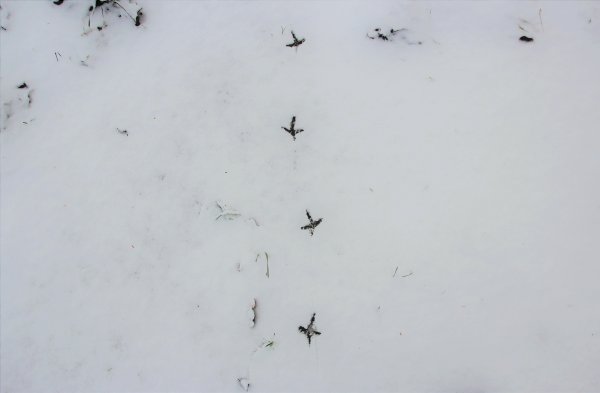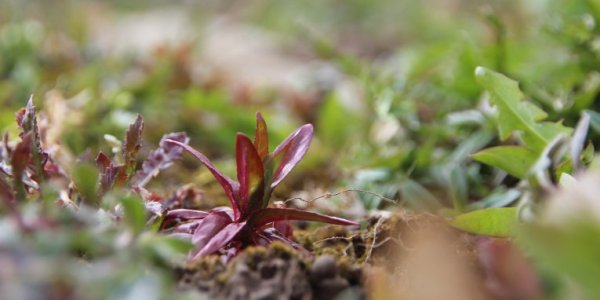Nomination of 2019: the Hazel Grouse
At the start of the new year, representatives of various biology branches and sub-branches in Latvia chose their candidates for this year. Already for the 24th time, the Latvian Ornithological Society has chosen the “Bird of the Year” and in 2019 this title was awarded to the hazel grouse, a member of the grouse family.
The hazel grouse is a sedentary species – they do not travel to the warm lands, and in general they tend to stay around their home. They can be found throughout Latvia. It is estimated that there are several tens of thousands of these birds residing in Latvia. This is quite a lot, but ornithologists still consider the hazel grouse as an endangered bird species, since their number has declined significantly over the last decade.
Natural enemies
The number of these birds depends on the diversity of forest structures and winter conditions, such as the severity of the winter and the thickness of the snow cover, which affect the availability of hiding places. When the snow is deep enough, hazel grouses like to sleep in the snow – in snow caves. If there is not enough snow, less safe places, such as thicker spruce branches, are chosen for spending a night.
Wild boars, raccoon dogs, martens, foxes and northern goshawks are the biggest threat to the bird of 2019. These are the most important natural enemies of the hazel grouse in the forest. Similarly, American minks, stoats, weasels, badgers and northern sparrowhawks are not great friends either. However, the number of northern sparrowhawks has also decreased significantly, so they do not currently have a significant impact on the hazel grouse population.
Photo: A place that hazel grouses enjoy
Hazel grouses are to be found in deciduous, mixed and spruce forests of all ages. There is a relatively small number of these birds living in coniferous stands. First of all, hazel grouses choose areas that are rich in woody debris, with a thick second floor, undergrowth. Usually, hazel grouses settle in the immediate vicinity of springs, rivers or other small, non-drying waters. When choosing their place of residence, hazel grouses look for a place where there is a regular access to gastrolytes – small stones that concentrate in the bird's gizzard and help to crush feed; in the warm season hazel grouses enjoy swimming in the sand. They like overgrown clearings.
Uģis Bergmanis, LVM Senior Environmental Expert: “There are no special areas set up for the protection of the habitats suitable for the hazel grouse, because the territories established in the state forests for the protection of other species of birds nesting in forests and the restrictions for forest works established by LVM for the reduction of disturbance during the nesting period are also suitable for the hazel grouse. The area of this type of territories, where no economic activity is performed, has been increasing in LVM forest lands every year”.
Females are smaller than males
Hazel grouse is the smallest representative of the subspecies of the grouse family. When a hazel grouse ruffles its feathers, it looks a bit bigger than the common pigeon. It should be noted that hazel grouse females fall short of males both in height and weight.
For both sexes the body is stocky, the neck is relatively short, the head is small, the tail is short, the wings are rounded and short, which means that they are not suitable for long flights. The length of the bird's legs is also modest, but it does not interfere with the ability of the hazel grouse to be agile and quick, because their legs are very strong.
Photo: hazel grouses are hard to find, but the traces left in the forest are common
Hazel grouses have basically grey-russet-white feathering. Bird's tail is grey with a wide black crossbar at the end of the tail. Hazel grouses have a crest on their head. For males, the crest is much larger, and at the bottom of the head they have a black, white bordered patch.
“Wedding” time and baby birds
Hazel grouses have their mating period in spring when the snow has melted; however, couples are usually already made in autumn. Each hazel grouse couple chooses their individual place of residence.
The nest is made at the end of April or in May. It is done by a female on the ground between ground plants, usually near a growing tree or shrub, or under a tree trunk.
The bird lays 6 to 13 eggs. The incubation period is at least three weeks.
Babies hatch almost simultaneously. The mother protects the baby birds and warms them up in cooler weather, yet food must be sought and found by the babies themselves already from day one. They stay with their mother until autumn.
They learn to fly very soon - in just a couple of days.
Hazel grouse feed in different seasons of the year
They basically feed on plants
In the first ten days after hatching, the small hazel grouses feed only on arthropods, mostly on spiders, small insects, worms. As they grow up, their food is diversified, and young birds gradually change to plant feed.
Adult hazel grouses mostly choose vegetarian food. Hazel grouses feed on the juicy parts of plants – sprouts, leaves and flower buds, leaves, including flowers, fruit and seeds.























